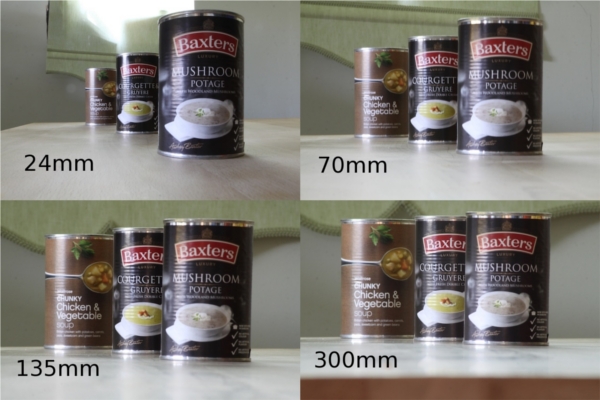Были или нет американцы на Луне?
13,283,409
109,942
Просто_русский
Цитата: Technik от 06.01.2018 22:30:00Неправильно. Я имел в виду, что приведенная здесь Вьюером
https://glav.su/foru…age4687953
первая пара фотографий, с учетом того, что вторая пара - не доказательство, а мухинское жульничество (что показано мною здесь)
https://glav.su/foru…age4699850
- безусловным доказательством того, что этот эпизод снят в павильоне, также считаться не может. Если Мухин сжульничал по второй паре - я доверять его доказательству не могу. И объяснил почему - "единожды совравшему - кто ему поверит?"
Как уже сказал, уверен, что на эту ситуацию есть вполне рациональное объяснение, без привлечения гипотезы об "афере".
Читайте по слогам: американцы взяли оригинальное фото, что-то там подрисовали и положили его в раздел копий. Ответьте внятно на вопрос: ЗАЧЕМ?
По поводу "единожды совравшему..."
Вы за пол века так и не удосужились привести ни одной фото, по поводу которой было бы заключение профильной экспертизы со словами "стопудово снято на Луне". Следовательно, любая (в данном случае пара фотографий), подразумевающая жульничество "подающей" стороны спускает всю аполлониаду в унитаз. До появления ХОТЬ ОДНОЙ подтвержденной экспертизой фотографии. Но её нет.
В контексте полетов на луну рассуждения Мухина о количестве сбитых во Вьетнаме самолетов - до лампочки. Если он приводит единственное доказательство мухлежа - это идет в зачет. Например, я Вам скажу, что воздух, которым мы дышим состоит из кирпичей, фантиков от конфет и кислорода. Враньё? В общем, конечно, да. Но это не дает Вам повод исключать кислород из состава атмосферы. Надеюсь, Вам понятно, о чем я?
Отредактировано: Просто_русский - 01 янв 1970
Просто_русский
Цитата: Vist от 06.01.2018 22:41:05Ну конечно! Ровно так же, как из Ваших вопросов следует, что аферу делали начинающие декораторы, начинающие операторы, начинающие кубрики...
Я Вас правильно понял....
Нет. Не начинающие. Поэтому Вы, как не специалист, и не поняли, в чем подвох. А вот специалисты в лице наших и американских кинооператоров и фотографов-профессионалов этот подвох видят. И Вам показывают и рассказывают что к чему. Но Вы ведь ничего слушать/видеть не хотите, не так ли?
Отредактировано: Просто_русский - 01 янв 1970
Просто_русский
Цитата: Vick от 06.01.2018 23:45:11Не, не договоримся. Ещё с ботом я не договаривался...
1. Это качание в твоей фантазии.
2. Не было.
3. Объясняли.
4. Где?
5. Покажь.
Садись, кол!
Как и предполагалось, по теме ни гу-гу. Даже свои хотелки дальше хотелок в обсуждении не продвинулись. Зато водички полить - это вы мастера, чего уж.
Отредактировано: Просто_русский - 07 янв 2018 00:56:43
Просто_русский
Цитата: перегрев от 07.01.2018 00:30:54Харош свистеть, болезный. Текст был про макеевскую "Корону", а не про Шаттл.
Я понимаю, что у Вас здоровья на пятерых хватит. По буквам читайте собственный стих.
"Полутароступенчатый шаттл на бумаге выглядел капец каким успешным и привлекательным с экономической точки зрения. А вышло вон оно как. Неоптимальная ракета вся фишка которой в многоразовасти. Плюс реально без движков."
Это не о шаттлах? Выделенное, это о какой ракете?
А-аа, так это о "Короне"! То есть, в который раз, после Н-1, свою разработку не знаем и не понимаем, а американскую по мурзилкам на раз отправляем на Луну?
Здоровья Вам.
Отредактировано: Просто_русский - 07 янв 2018 01:00:32
57 лет
Карма: +161.58
Регистрация: 17.04.2009
Сообщений: 6,569
Читатели: 30
Регистрация: 17.04.2009
Сообщений: 6,569
Читатели: 30
Цитата: Просто_русский от 07.01.2018 00:53:23Я понимаю, что у Вас здоровья на пятерых хватит. По буквам читайте собственный стих.
"Полутароступенчатый шаттл на бумаге выглядел капец каким успешным и привлекательным с экономической точки зрения. А вышло вон оно как. Неоптимальная ракета вся фишка которой в многоразовасти. Плюс реально без движков."
Это не о шаттлах? Выделенное, это о какой ракете?
Выделенное о Короне. Впрочем почему бы ещё раз не продемонстрировать наглядно Вашу неспособность понимать элементарные тексты?
Цитата: Горец от 02.01.2018 15:43:24"Корону" ГРЦ делал на свои. Да и "делали" не особо, ЕМНИП даже до эскизного не дошло, а закрыли именно за отсутствием денег.
Цитата: перегрев от 02.01.2018 21:43:17И из-за отсутствия двигла. Выражение лиц макеевцев дорогого стоило при вопросе: "Вы какой движок на это великолепие ставить собираетесь"?
Цитата: Alexxey от 02.01.2018 22:22:25А какой хотели-то? Как это великолепие может работать, было же какое-то обоснование?
Цитата: перегрев от 02.01.2018 22:44:20Корона долгоиграющий проект. Лично у меня есть впечатление, что там целая научная школа выстроилась Они регулярно публиковались в закрытых отраслевых изданиях. Емнип, первый раз я про неё прочитал в 1997 году. Что касается движков, то в одном из вариантов был 122й (сиречь РД-0120). Что уже само по себе смешно... Вопрос о возобновлении производства 122х только на моей памяти поднимался трижды. Какие там два миллиарда евро, я Вас умоляю... Двадцать два по самым скромным оценкам
Цитата: Alexxey от 03.01.2018 01:13:59Интересны не административно-хозяйственные подробности. Сам проект одноступенчатой ракеты, конкурентный — такое возможно?
Цитата: перегрев от 03.01.2018 01:29:50Да честно говоря хрен его знает... Полутароступенчатый шаттл на бумаге выглядел капец каким успешным и привлекательным с экономической точки зрения. А вышло вон оно как. Неоптимальная ракета вся фишка которой в многоразовасти. Плюс реально без движков. Насколько я знаю, никакой Короны в ФКП нет. Что как бы намекает...
Вообще говоря прикольно получилось. Вы не только показали, что понимать тексты не можете, но и нечистоплотность свою очень предметно продемонстрировали. Цитатку-то подрезали... Нехорошо-с. Впрочем наивно было ожидать чего-то другого от опроверга...
Цитата: Просто_русский от 07.01.2018 00:53:23То есть, в который раз, после Н-1, свою разработку не знаем и не понимаем, а американскую по мурзилкам на раз отправляем на Луну?
Вы свои личные сексуальные фантазии на других людей-то не распространяйте. Лады?
Цитата: Просто_русский от 07.01.2018 00:53:23Здоровья Вам.
И Вам не хворать.
"Военное дело просто и вполне доступно здравому уму человека. Но воевать сложно."
К.Клаузевиц
К.Клаузевиц
Просто_русский
Цитата: перегрев от 07.01.2018 01:25:27Выделенное о Короне. Впрочем почему бы ещё раз не продемонстрировать наглядно Вашу неспособность понимать элементарные тексты?
Вообще говоря прикольно получилось. Вы не только показали, что понимать тексты не можете, но и нечистоплотность свою очень предметно продемонстрировали. Цитатку-то подрезали... Нехорошо-с. Впрочем наивно было ожидать чего-то другого от опроверга...
1. Чем "подрезанная" цитатка отменяет Ваши утверждения "Полутароступенчатый шаттл на бумаге выглядел капец каким успешным и привлекательным с экономической точки зрения. А вышло вон оно как. Неоптимальная ракета вся фишка которой в многоразовасти. Плюс реально без движков."
2. Что же тут непонятного? С какого-то бодуна некий товарищ сравнивает Корону с шаттлом и приходит к неутешительным выводам. Хотя этот же специалист зуб давал, что ракето, опознанное по мурзилкам, влегкую отвезет кучу людей и железа на Луну. Без единого успешного испытательного полета. Сразу много раз со 100 процентной надежностью. Крестик прочно зацепился за трусы.
3. Сравнивать Корону и шаттл, значит быть не в теме. Или не уметь правильно изъясняться на родном языке. Но я не доктор.
Отредактировано: Просто_русский - 01 янв 1970
Карма: +538.86
Регистрация: 21.10.2015
Сообщений: 5,886
Читатели: 0
Аккаунт заблокирован
Регистрация: 21.10.2015
Сообщений: 5,886
Читатели: 0
Аккаунт заблокирован
Цитата: Vick от 06.01.2018 09:10:32Тю... создать на Земле на несколько дней в небольшой камере "Лунные условия" (и в эту "камеру" напихать любых фотокамер) - это проблема?
Ну раз, по версии американцев, снимать на плёночный фотоаппарат в космосе нет никаких проблем, то тогда предъявите нам снимки, сделанные советскими космонавтами в открытом космосе на плёночный фотоаппарат без использования гермобокса.
Ждём снимки.



П.С.
Только "лунным" американцам удалось снимать на простой плёночный фотоаппарат, другим сей подвиг и сейчас неподвластен.

Карма: +538.86
Регистрация: 21.10.2015
Сообщений: 5,886
Читатели: 0
Аккаунт заблокирован
Регистрация: 21.10.2015
Сообщений: 5,886
Читатели: 0
Аккаунт заблокирован
Цитата: sign от 06.01.2018 09:39:16Странное дело.
Люди, опровергающие, такие невнимательные.
На ровере на Луне были немного иные колёса. С более редкой сеткой. На земле, для испытаний, применили более плотное плетение. Почему и как, ранее техник подробно осветил.
То есть, исходя из простой логики, лунные колёса с редкой сеткой так на Земле и не испытывались.

Так сразу и говорите, на Земле американцы занимались рекламными покатушками для дурачков, которые с реальными испытаниями и Луной не имели ничего общего.



П.С.
Защитники лунной аферы обнаружили у американского "луномобиля" уже три вида колёс!


Карма: +538.86
Регистрация: 21.10.2015
Сообщений: 5,886
Читатели: 0
Аккаунт заблокирован
Регистрация: 21.10.2015
Сообщений: 5,886
Читатели: 0
Аккаунт заблокирован
Цитата: sign от 06.01.2018 10:00:02Нет лучшего способа выявить безграмотность, дать пример.
Безграмотный, любой пример не поймёт.
Мало того, он даже не поймёт, что безграмотный.
Единственный человек из здешних, который меня изумляет, это дядя Вася.
Ну ведь грамотный. Умный. Почему в стане верующих в неполёт? Не понимаю.
Мощно... но непонятно.

Ну давайте тогда вместе посмотрим простой ролик, где видно с 2.40, как после пробежки астронавта между флагом и камерой, флаг начинает колыхаться.

https://youtu.be/ymwE1sNm82Y
И как посмотрите, объясните причину начала колыхания флага, до этого абсолютно неподвижного.
П.С.
Я за попкорном...
Сейчас грамотный верующий покажет безграмотным... всю мощь своего интеллекта.

Карма: +538.86
Регистрация: 21.10.2015
Сообщений: 5,886
Читатели: 0
Аккаунт заблокирован
Регистрация: 21.10.2015
Сообщений: 5,886
Читатели: 0
Аккаунт заблокирован
Цитата: лателеннолоппа от 06.01.2018 10:07:19Радиацию, нагрев с одной стороны и охлаждение с другой, постоянная пыль, которая 100% попадала при заряжании плёнки да и вообще во все щели. Всё это , конечно, очень легко и непринуждённо создавалось и тестировалось на Земле.
Вот только дурачки с МКС - постоянно что-то испытывают- воздействие вакуума на орбите и это что-то (вот дурачки) возвращают для исследований. Нет бы создать "небольшую камеру с условиями". ))
Нам бы хоть один снимочек из открытого космоса, сделанный космонавтами на плёночный фотик.

Карма: +538.86
Регистрация: 21.10.2015
Сообщений: 5,886
Читатели: 0
Аккаунт заблокирован
Регистрация: 21.10.2015
Сообщений: 5,886
Читатели: 0
Аккаунт заблокирован
Цитата: normalized_ от 06.01.2018 11:05:23Неспособность признавать ошибки. Когнитивное искажение типа "люди скорее склонны взвешивать потери от признания своей неправоты, вместо того чтобы оценивать ситуацию в нейтральном, научном стиле."
"Вывод: ящики хлипкие , я так вижу. еще и алюминевые"
"Яркость или освещенность, какая разница. Ламберт и косинусы, Читаю книгу вижу фигу"
"Кратера нету"
И так почти всем вопросам, которые обсуждались здесь на ветке.
Плюс якобы патриотизм и борьба с пиндосами, типа думают, что научное фричество в обществе помогает как-то российской науке и космонавтике.
Отсюда и вся эта тутошняя "лысенковщина" как в свое время у товарищей Тимофея Лысенко вместе с Исааком Израилевичем Презентом, ведущим сессиию по разгрому "буржуазной генетики".
В июне 1939 года И. И. Презент, ближайший сторонник Т. Д. Лысенко, направил председателю Совнаркома СССР В. М. Молотову докладную записку, в которой, в частности, писал:
Ничего не поменялось, все про прежнему, вместо аргументов хамство и кликушество по политике:
Ветка, стремится к званию "высокой культуры"
А оппоненты уже к таким правилам и привыкли.
Не надо слов...
С вас, как от верующего которому всё понятно, объяснение колыхающего флага, после пробежки астронавта на 2.40
https://youtu.be/ymwE1sNm82Y
Надеюсь, после ваших "портянок" с редкими словами, такой примитивизм вы осилите?

Карма: +538.86
Регистрация: 21.10.2015
Сообщений: 5,886
Читатели: 0
Аккаунт заблокирован
Регистрация: 21.10.2015
Сообщений: 5,886
Читатели: 0
Аккаунт заблокирован
Цитата: Technik от 06.01.2018 11:38:06Лучше бы не «добавляли». Благо лишний раз подчеркнули, что вы либо склеротик, либо просто тролль, но в обоих случаях демонстрируете полное непонимание того, что вам говорят.
В-первых, здесь неоднократно демонстрировался ролик с испытаниями «сетчатого» колеса ровера на поверхности, имитирующую лунную. Вот этот
https://youtu.be/byg3iKMnwj0
Поскольку ко времени этих испытаний уже было известно, что такое лунный грунт, грамотные американские инженеры, в отличие от особо грамотных скептиков, подобрали именно такой шаг сетки, чтобы реголит, являющийся пыле-песчаной смесью вполне определенных размеров, благополучно высыпался из колес. Что он и делает. Г-н Дальний тоже видит это нормальное явление – но в силу особенностей своего восприятия считает это чудом. Ну считайте и дальше, что с Дальнего возьмешь…
Во-вторых, я повторю ранее сказанное - что результаты автономных (вне самой системы) испытаний составляющих такой системы (в данном случае – металлических колес ровера) в технически обоснованных случаях могут быть зачтены в испытания этой самой системы. Перечитайте этот текст трижды, г-н Дальний, может, и поможет. Хотя сомнительно.
В-третьих. Вот это я продублирую и на ветке для моих коллег по здравому смыслу. Здесь показаны экспонаты вашингтонского аэрокосмического музея (Смитсониан). Легко видеть, что через такую сетку не то что реголитовая пыль свободно высыплется, но и вполне себе крупный песок.
https://airandspace.si.edu/collection-objects/wheel-lunar-rover
Между прочим, среди экспонатов и та самая лунная карта, которую использовали астронавты для починки сломавшегося крыла колеса ровера, см. фото 10 и 11.
Осталась еще одна работа – связанная с достаточно серьезным расчетом (пламенный привет г-ну л-лоппе). Будет попозже.
https://youtu.be/byg3iKMnwj0
Так как вы, для луномобиля, уже обнаружили два типа колёс, с частой и редкой сеткой, то с вас, для начала, доказательство что на данном ролике испытывается именно лунное колесо с редкой сеткой.
Именно доказательство а не ваши имхи и мамоклянения.


Москва
Карма: +90.60
Регистрация: 07.06.2016
Сообщений: 5,219
Читатели: 17
Регистрация: 07.06.2016
Сообщений: 5,219
Читатели: 17
Цитата: ДальнийВ от 07.01.2018 10:16:21Не надо слов...
С вас, как от верующего
"Верующим" пожалуйста, тут лучше ДядюВасю называйте, а не оппонентов, ему это в самый раз подошло.
Цитата: ДальнийВ от 07.01.2018 10:16:21которому всё понятно, объяснение колыхающего флага, после пробежки астронавта на 2.40
https://youtu.be/ymwE1sNm82Y
Надеюсь, после ваших "портянок" с редкими словами, такой примитивизм вы осилите?
Примитивизм, да. Согласен.
Я уже давно заметил, что вы примитивно не помните, что Вам отвечали.
И давно понял, что Вы примитивно не запоминаете того, что именно Вам отвечали, поэтому и флудите и оверквотите тут с одним и тем же вопросом несколько раз по дню и каждую неделю.
Сочувствую, конечно. Искренне. Очень уж удручающее зрелище. (Ролик, в сообщении Алексея ниже про "Немного осталось", тут как раз тоже кстати. Нехороший признак, в общем.)
Вы так и не осилили это упражнение?
23 августа 2017, 12:52:41
Посмотрели этот ответ? Или нет?
19 августа 2017, 12:21:55
Ну, кушайте, не обляпайтесь, повторяю еще раз, с 4:40
И вот добавлю еще:
Причем астронавты и операторы на Земле заметили колыхание флага и прямо во время трансляции это обсуждали.
Только по представлениям недалеких так называемых "скептиков" опять пьяный в дупель Кубрик ничего не заметил "тени в в разные стороны", "прожектор", "следов от ровера нету", "звезд не видно", "кратера нету", " флаг ветром колыхает", и не переснял).
Не читали что ли, что давно опубликовано? Или Вам опять нужно повторять, что написано в журнале активности по каждой минуте и фотографии?
Скрытый текст
О чем вам, так называемым "скептикам" уже писалось с 2009 года не один раз.
(Но, видно, что всё сильно запущено, и прогноз не утешителен.)
И еще, для развития воображения, которого не хватает чтоб понять: Вам просто необходимо узнать, как кажущаяся глубина сцены меняется в зависимости от фокусного расстояния, и поинтересоваться о характеристиках камеры.
Скрытый текст
А здесь разжевывают в видео:
Как итог: касания не видно (загорожено астронавтом). А может и в руках чего было, а может и песок от ног - не видно этого ничего, в кадр не попадает и не со всех сторон снято. Вот потому что касания не видно и нет представления о расположении на сцене, o характеристик камеры, Вы и не можете сообразить "как так" он колыхается. Раз касания не видно, а оно при этом судя по всему вполне возможно, то делать заявления что колебания вызваны "воздухом" - конспирологическая глупость. Причем не наблюдается и того, что полотно ведет себя как в воздухе, не видно никаких создаваемых астронавтом волн воздуха вдоль полотна. Тем более, учитывая что у вас, так называемые скептиков, как только у вас случается (по своему обыкновению) облом с доказательствами фальсификации по теме "ветра", "пыли" или "атмосферы" , всё равно тут же по закономерно "логично" переходите на следующий этап, что это снято в специальной вакуумной камере. (Ну, некоторые еще что снято в песочнице, так как песок из под колес крупный, а крупный так как песчинок хоть и не видно, но он что-то очень быстро падает, не оседает как пыль в атмосфере. Тоже любопытный случАй логики так называемого "скептитизма").
Отредактировано: normalized_ - 09 янв 2018 12:46:55
Карма: +219.74
Регистрация: 12.02.2009
Сообщений: 6,364
Читатели: 3
Регистрация: 12.02.2009
Сообщений: 6,364
Читатели: 3
Цитата: ДальнийВ от 07.01.2018 10:07:28Нам бы хоть один снимочек из открытого космоса, сделанный космонавтами на плёночный фотик.
Alexxey от 10.02.2017 11:32:00:
Ю. М. Батурин, Д. Ю. Щербинин. Фото- и кинотехника на борту отечественных пилотируемых космических аппаратов (1961–2000) / «Вопросы истории естествознания и техники» 2011 • № 3
Цитата: ЦитатаНа первых пилотируемых космических кораблях типа «Союз» в полет
отправлялся серийный фотоаппарат «Салют-С» – камера с форматом кадра
6 × 6 см модульной конструкции со сменными объективами, видоискателями
и кассетными блоками (типа «Хассельблад» (Hasselblad). Фотоаппарат имел
шторный фокальный затвор с металлическими гофрированными шторками
из нержавеющей стали с диапазоном выдержек от 1/2 до 1/1500 с, автоспуск
и синхроконтакт с регулируемым временем упреждения. Фокусировочный
экран видоискателя – матовое стекло с линзой Френеля и клиньями Додена
в центре. В верхней части корпуса имелась складная съемная светозащит-
ная шахта с увеличительным стеклом, прикрывающая матовое стекло с
линзой Френеля. Фотоаппарат «Салют-С» являлся основным бортовым фо-
тосредством до 1973 г. и был заменен своим «прототипом» – фотокамерой
«Хассельблад».
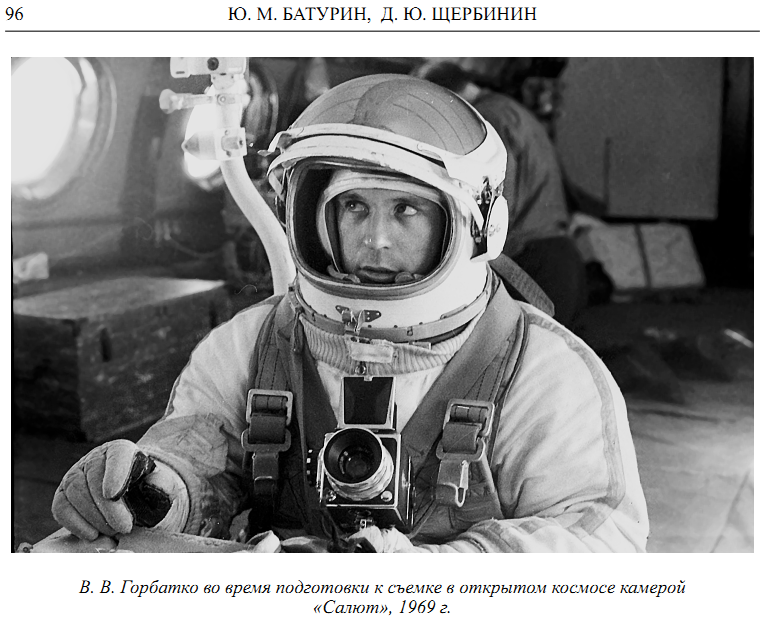
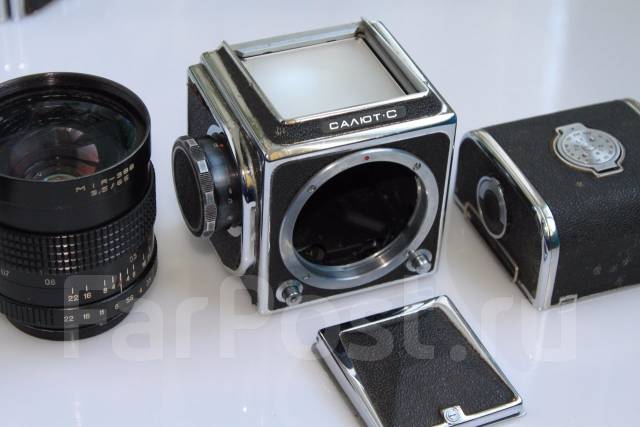
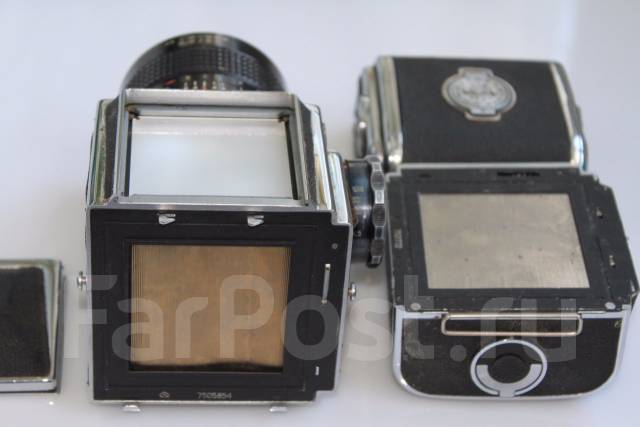
Цитата: Цитата«Хассельблад» – самая распространенная в мире система фотоаппарату-
ры формата 6 × 6 см. Благодаря принципу заменяемости и высокому каче-
ству всех основных деталей, фотоаппаратура этой марки завоевала широ-
кую известность во всем мире. Количество элементов системы превышает
150 наименований, что позволяет составлять оборудование, подходящее прак-
тически для решения любых фотографических задач. Сменные объективы со
штыковыми оправами быстро заменяются. Система включает14 разных объ-
ективов с фокусным расстоянием от 30 мм до 500 мм и углом изображения по
диагонали от 180° до 9° (соответственно по горизонтали приблизительно от
112° до 7°). Не случайно специалисты НАСА остановили свой выбор именно
на системе «Хассельблад».
Три основные ее модели – камеры Hasselblad 500 С/М, Hasselblad EL/M и
Hasselblad SWC. Две первые представляют собой однообъективные зеркаль-
ные аппараты; модель 500 С/М – ручной, а модель 500 EL/M – с моторным
приводом для транспортировки пленки и взведения затвора. Hasselblad SWC –
широкоугольный аппарат. В 1984 г. он был использован В. А. Джанибековым
для съемки в открытом космосе. Съемка тогда была исключительно важна,
потому что во время выхода в открытый космос С. Е. Савицкая испытывала
новый универсальный ручной инструмент (УРИ), разработанный в киевском
Институте электросварки имени Е. О. Патона. С его помощью были выполне-
ны операции по резке, сварке и пайке металлических пластин17.

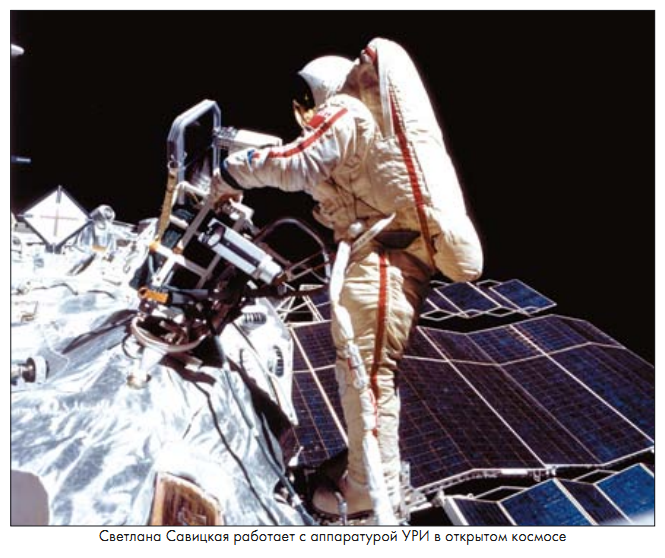

Москва
Карма: +90.60
Регистрация: 07.06.2016
Сообщений: 5,219
Читатели: 17
Регистрация: 07.06.2016
Сообщений: 5,219
Читатели: 17
Цитата: Vick от 07.01.2018 08:05:12Не покажет...Скрытый текст
Давайте я попробую его попросить...
Уважаемый так называемый "скептик" Просто Русский. Вы писали:
ЦитатаЦитата: Просто_русский от 07.01.2018 00:36:15Скрытый текст
4. Следы ровера в А-15 перед нераспакованным шайтан-мобилем.
5. Несоответствие размеров посадочных ступеней на снимках LRO их фактическим размерам.
Вот Вам пяток. Пока достаточно.Скрытый текст
Принесите, пожалуйста, в типа "студию" хоть какие-то обоснование ваших утверждений по сути (желательно сделанных должным образом и не смешных для научного сообщества), а именно:
Скрытый текст
5. ПокажьТЕ. (Пояснение: Покажите это несоответствие, о которым вы пишите. Продемонстрируйте должным образом, то о чем вы пишите. Почему Вы видите, а научное сообщество не видит, может, это даже и проясниться, но только когда Вы начнете писать что-то по сути конкретно.)
Так понятней?
С темы Вы, конечно, Просто Русский, типа ни разу не соскакиваете и типа аргументируете по пунктам.
Фразы типа "УГ", или "сто раз жевалось", и уж тем более типа "Садись, кол!" типа не используете. (Зачем их используете-то?)
Как и предполагалось, по теме ни гу-гу. Даже свои хотелки дальше хотелок в обсуждении не продвинулись. Зато водички полить - это вы мастера, чего уж.
По первым 1-3 пунктам тоже хорошо услышать рассказы о Ваших "нестыковках". Было бы очень любопытно почему Вы думаете таким способом. И как с Луной связано, если связано, конечно. (И сколько Вам понадобится на это времени, чтоб обосновать "нестыковки" должным образом. На сколько месяцев больше, чем на так и не отвеченные Вами в прошлый раз подобные вопросы)
Спасибо.
Отредактировано: normalized_ - 07 янв 2018 12:02:18
Карма: +538.86
Регистрация: 21.10.2015
Сообщений: 5,886
Читатели: 0
Аккаунт заблокирован
Регистрация: 21.10.2015
Сообщений: 5,886
Читатели: 0
Аккаунт заблокирован
Цитата: Vick от 06.01.2018 19:06:38Вранья много, зашкаливающее количество - и всё оно истекает от скептикующих. Море разливанное. Наглое, беспардонное, безграмотное. Просто шабаш.
Пяток нестыковок назови, которые не были бы объяснены и состыкованы.
Держите одну, пока.
https://www.youtube.…e=youtu.be
Ну а теперь... что вы там про враньё говорили?
Карма: +260.02
Регистрация: 05.08.2016
Сообщений: 18,954
Читатели: 4
Регистрация: 05.08.2016
Сообщений: 18,954
Читатели: 4
Так что? Забредательный опять пропал надолго? Перечислить "массу нестыковок" или хотя бы пяток так и не удосужился...
Всем ботам и пропагандистам "не-рефлексируй-распространяй" просьба не беспокоиться. гораздо интереснее такие забредательные или юрии-с-бородой-на-аватарке. Меня интересует мнение того самого персонажа, который, по его словам, видит нестыковки и враньё. Что конкретно он "видит", что его убеждает, что он видит "враньё и нестыковки", почему рациональные объяснения его не устраивают.
Всем ботам и пропагандистам "не-рефлексируй-распространяй" просьба не беспокоиться. гораздо интереснее такие забредательные или юрии-с-бородой-на-аватарке. Меня интересует мнение того самого персонажа, который, по его словам, видит нестыковки и враньё. Что конкретно он "видит", что его убеждает, что он видит "враньё и нестыковки", почему рациональные объяснения его не устраивают.
Отредактировано: Vick - 07 янв 2018 13:09:29
Зверей встретили песни и громкий смех.
А звери вошли и убили всех.
*****
Шприй был прав! (с)
А звери вошли и убили всех.
*****
Шприй был прав! (с)
Карма: +538.86
Регистрация: 21.10.2015
Сообщений: 5,886
Читатели: 0
Аккаунт заблокирован
Регистрация: 21.10.2015
Сообщений: 5,886
Читатели: 0
Аккаунт заблокирован
Цитата: Technik от 06.01.2018 21:43:49С вами тоже можно было бы согласиться, если бы рядом не лежало доказательство мухинского жульничества по второй паре снимков. Единожды совравшему... и т.д.
Ну вы уж совсем... изолгались в попытке очернить Мухина.
Где он соврал?
https://www.youtube.…fVzbDfuesE
Вот его полное, не урезанное интервью, где Мухин утверждает что советские учёные не получали американский лунный грунт, а в лучшем случае получали только информацию о его составе.
В то же время, защитники лунной аферы привели две самые "железобетонные" по их мнению, советские работы, где по их мнению мы получали и исследовали американский лунный грунт.
Вот ссылки
https://drive.google…FfVXM/view - рентгеноэлектронное исследование лунного реголита из моря Изобилия и моря Спокойствия.
http://wwwold.inp.ns…96_042.pdf - совместное использование РФА-СИ и ИНАА методов для геохимической характеристики базальтов восточной окраины Луны.
То есть исходные данные имеем.
Ну а теперь, тот, кто не любит когда его держат за дурачка, и кто хочет сам лично и окончательно разобраться с наличием американского лунного грунта, не полагаясь ни на какое мнение, на основе этих работ с "железными" доказательствами, сам разберётся, получали-ли советские учёные американский лунный грунт или нет.
П.С.
А вот и подсказка из этих работ, на что обратить внимание (для тех у кого нет много времени дотошно разбираться)- https://glav.su/file…4682ea.jpg
https://s019.radikal…503ae2.jpg
Просто_русский
Цитата: normalized_ от 07.01.2018 11:25:16Принесите, пожалуйста, в типа "студию" хоть какие-то обоснование ваших утверждений по сути (желательно сделанных должным образом и не смешных для научного сообщества), а именно:
Научное сообщество, это кто? Вы что ли? Уже смешно.
ЦитатаПо первым 1-3 пунктам тоже хорошо услышать рассказы о Ваших "нестыковках". Было бы очень любопытно почему Вы думаете таким способом. И как с Луной связано, если связано, конечно. (И сколько Вам понадобится на это времени, чтоб обосновать "нестыковки" должным образом. На сколько месяцев больше, чем на так и не отвеченные Вами в прошлый раз подобные вопросы)
Спасибо.
По всем пунктам здесь приводились ссылки. По некоторым с указанием конкретного времени (до секунд) в соответствующих роликах. Если Вы читаете ветку, значит просто флудите, если не читали - не встревайте в разговор с целью лишь бы "что-то прокукарекать". Конкретики от Вас персонально ожидать бессмысленно, поэтому (если есть желание) сами, всё сами. "Научное сообщество", неспособное перейти по ссылке меня не интересует. "Научное соббщество", бормочущее заклинания вместо конкретики - тем более.
Представитель "научного сообщества", нашпиговывающий свои посты цитатами из постов форумчан годичной, а то и более давности, но неспособный читать содержимое этих постов - обыкновенный флудер. Надеюсь, я достаточно подробно объяснил?
Отредактировано: Просто_русский - 01 янв 1970
Карма: +260.02
Регистрация: 05.08.2016
Сообщений: 18,954
Читатели: 4
Регистрация: 05.08.2016
Сообщений: 18,954
Читатели: 4
Цитата: Просто_русский от 07.01.2018 13:08:03Научное сообщество, это кто?
Это такая штука, прислушиваясь к мнению которой пишут учебники. Причём так подло устроена, что великому и величайшему энтомологу, например. не позволит писать или редактировать учебник по ядерной физике в связи с его сугубо энтомологическими представлениями.
Зверей встретили песни и громкий смех.
А звери вошли и убили всех.
*****
Шприй был прав! (с)
А звери вошли и убили всех.
*****
Шприй был прав! (с)
Сейчас на ветке:
36,
Модераторов: 0,
Пользователей: 0,
Гостей: 3,
Ботов: 33

